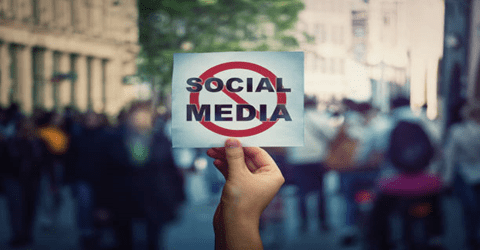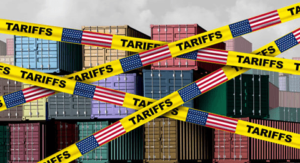
Australia’s Anti-Social Media Ban for Under-16s
Anti-social media policies like Australia’s recent ban on under-16s using platforms such as Facebook, Instagram, and TikTok spark a critical conversation about the balance between protecting children and limiting access to digital spaces.
With companies like Meta and TikTok facing hefty fines for non-compliance, this bold move raises important questions: Are governments overreaching, or are they stepping up where tech giants have failed? The addictive design of social media and its proven links to mental health issues, including anxiety and depression, make this a timely intervention.
As debates intensify globally, Australia’s action serves as a potential blueprint for addressing the growing risks of social media addiction among the youth.
Anti-Social Media
While companies like Meta and TikTok have criticized the move, citing the steep fines of up to $32 million for non-compliance, the policy underscores a growing recognition of the profound risks that unchecked social-media usage poses to young people.
Here, we explore the implications of this ban in seven key points, shedding light on why it represents a critical step in safeguarding the well-being of the next generation.
Read More: Will Carbon Farming Save the Planet?
Table of Contents
1. The Addictive Design of Social Media
Social media platforms are not neutral tools for communication; they are purposefully engineered to be addictive. Sean Parker, Facebook’s founding president, revealed that the platform’s design hinges on a single, manipulative question: “How do we consume as much of users’ time and conscious attention as possible?” The answer lies in exploiting human psychology, specifically the innate desire for social validation. Likes, comments, and shares create a “social-validation feedback loop” that triggers dopamine releases in the brain, making users crave more engagement.
This design, which increasingly reflects the traits of anti-social media, is not just harmful but particularly insidious for children, whose developing brains are especially vulnerable to addiction. The regret expressed by former executives like Parker and Chamath Palihapitiya highlights the ethical quandaries of these platforms. By banning under-16s from accessing social media, Australia is taking a firm stance against the deliberate exploitation of psychological vulnerabilities.
Read More: The Dark Side of Monopolistic AI Innovations, You Must Know!
2. The Rise of Problematic Social-Media Use
Addiction-like behaviors associated with social media, often referred to as “anti-social media” due to its detrimental impact on real-world interactions, are increasingly prevalent among adolescents. According to the World Health Organization’s (WHO) Regional Office for Europe, the percentage of adolescents displaying problematic social-media use – characterized by an inability to control usage and withdrawal symptoms – has risen from 7% in 2018 to 11% in 2022.
In the United States, the average teenager spends 4.8 hours daily on social media, often at the expense of healthier activities like exercise, study, or face-to-face interactions.
Australia’s move is timely and essential, as it seeks to curb this rising trend before more damage is done. Restricting access for those under 16 acknowledges that children lack the cognitive maturity to navigate such addictive platforms responsibly.
Read More: The Role of European Central Bank in Decarbonization and Price Stability
3. Mental Health Implications
The mental health consequences of excessive social-media use among adolescents are well-documented. Studies reveal that teenagers who spend more than three hours daily on social media are twice as likely to experience anxiety and depression compared to their peers. Furthermore, social-media platforms, often criticized as “anti-social media” for their adverse effects, have been linked to low self-esteem, cyberbullying, and poor academic performance.
The correlation between social media and the alarming increase in suicide rates among US teens over the last decade cannot be ignored. By imposing an age restriction, Australia aims to mitigate these mental health risks, creating a safer environment for children to grow and develop.
Read More: The Key Role of Healthy Soil in Climate Action
4. Children Advocating for Their Protection
One of the most striking aspects of the debate surrounding social media is the growing number of young people themselves calling for stricter regulations. In Switzerland, for instance, the youth parliament of Lucerne’s canton recently petitioned for stronger protections against social-media addiction, including awareness campaigns targeted at parents.
This unprecedented advocacy from children underscores the severity of the harm caused by anti-social media behaviors and the platforms enabling them. The fact that adolescents are pleading for adult intervention highlights the urgent need for policies like Australia’s, which prioritize their long-term well-being over corporate profits.
5. The Broader Societal Impact
The dangers of social media extend beyond individual users, affecting societal cohesion and trust. Palihapitiya has warned that the “short-term, dopamine-driven feedback loops” fostered by social media are “destroying how society works” by amplifying misinformation and polarization.
Often referred to as “anti-social media,” these platforms have been described as a “polarization engine,” inciting violence and eroding interpersonal relationships.
By implementing age restrictions, Australia’s policy could serve as a foundation for broader reforms aimed at addressing these societal harms. Protecting children from exposure to these platforms is an essential first step in curbing their corrosive effects on social fabric.
Read More: The Role of Green Growth Averting Climate Change
6. The Need for Global Regulatory Action
Social-media and anti-social media companies have demonstrated time and again that they cannot be trusted to self-regulate. Their business models thrive on maximizing user engagement, often at the expense of key contributor. Executives like Parker and Palihapitiya have admitted that these firms knew the potential for harm but chose to prioritize profit.
This makes governmental intervention not just justified but necessary. Australia’s policy sets an example for other nations to follow. A coordinated global effort to establish and enforce regulatory frameworks is essential to hold social-media and anti-social media companies accountable and protect users from exploitation.
7. A Call to Action
Australia’s ban on social media for children under 16 is not a complete solution, but it is a critical starting point. The rise of anti-social media behaviors among young users further underscores the urgent need for action. Governments worldwide must recognize their responsibility to safeguard the mental and emotional health of their youngest citizens. This includes raising awareness among parents, promoting digital literacy, and developing tools to monitor and manage children’s online activity.
Moreover, international cooperation is needed to create a regulatory environment that prioritizes people over profits. The WHO’s call for immediate and sustained action to combat the adverse effects of social media should serve as a rallying cry for policymakers everywhere.
Read More: Collective Climate Actions: The Urgency of Global Collaboration
Bottom Line
Australia’s bold move to ban social-media access for under-16s highlights the urgency of addressing the significant risks these platforms pose to young people. By tackling the addictive design of social media, reducing problematic usage, and mitigating mental health impacts, this policy sets a precedent for protecting future generations. This decisive action reflects growing sentiment against “anti-social media,” emphasizing the societal harm caused by these platforms when left unchecked.
As children themselves begin to demand action, and as evidence of social media’s societal harm continues to mount, it is clear that the time for complacency is over. Governments around the world must follow Australia’s lead in prioritizing the well-being of their citizens over the profit-driven motives of tech giants. Only through collective effort can we create a digital landscape that fosters health, safety, and intellectual independence for all.







